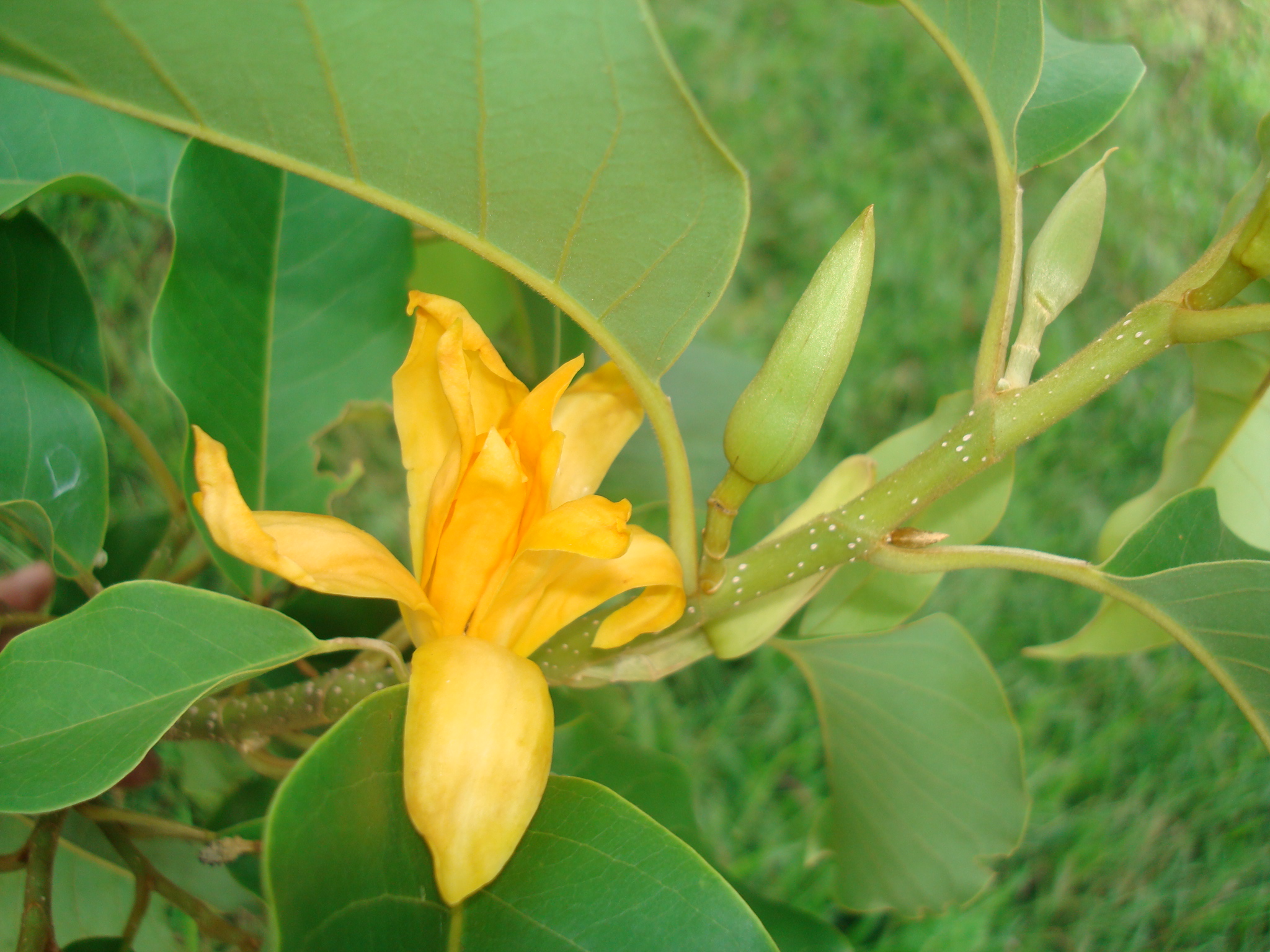ຈໍາປີ
Champak
Magnolia champaca (L.) Baill. ex Pierre
ພືດ
ໄມ້ຢືນຕົ້ນ
ຕົ້ນໄມ້ ແລະ ປາມ
Magnolia champaca var. champaca
Magnolia membranacea P.Parm.
Michelia aurantiaca Wall.
Michelia blumei Steud.
Michelia champaca L.
Michelia champaca var. blumei Moritzi
Michelia euonymoides Burm.f.
Michelia rheedei Wight
Michelia rufinervis DC.
Michelia sericea Pers.
Michelia suaveolens Pers.
Sampacca euonymoides (Burm.f.) Kuntze
Sampacca suaveolens (Pers.) Kuntze
ນິເວດວິທະຍາ
ການນຳໃຊ້
ກິດຈະກໍາເພື່ອຄວາມລື່ນເລີງ
The flowers are used for treating sinusitis, dizzness, chest pain, wooping cough and gonorrhoea or white. The leaves are combined with the leaves of Ficus microcarpa L. f./Ficus retusa L., 30 g each and 5 g of dried earth worm, make up a decoction, this remedy is reported to be good for chronic bronchitis in the elderlies. The stem bark is used for tertian fever, relieving cough, regulating menses. In Cambodia, the decoction of leaves is use as gagarism or mouthwash solution for the treatment of tonsilitis. According to Indian experience, the flowers are used in dyspepsia, nausea, fever and also useful as a diuretic and for healing renal maladies; the essential oil of the flowers is used for cephalagia. The root bark is a purgative and emmenagogue . The flowers and the essential oil distillated from the flowers are marketed for their scent. The oil is used in the production of cosmetics. According to traditonal medicine theory, the root and the fruit possess bitter taste, cool character, shows antirheumatismal and antiinflammatory effects, useful for sorethroat and pain relief. The stem bark is antipyretic, disposing of phlegm and astringent. The fruits have sedative effect, the leaves are antidote.
ການຄຸ້ມຄອງຈັດການ
ໂພຊະນາການ
| ສານອາຫານ | /100g | ໝາຍເຫດ |
|---|---|---|
| ໂປຣຕີນ | N/A | N/A |
| ຄາໂບໄຮເດຣດ | N/A | N/A |
| ໄຂມັນ | N/A | N/A |
| ວິຕາມິນ | N/A | N/A |
| ແຮ່ທາດ | N/A | N/A |
| ເສັ້ນໄຍ | N/A | N/A |
ອ້າງອິງ
Khela, S. 2014. Magnolia champaca. The IUCN Red List of Threatened Species 2014: e.T191869A15267603. http://dx.doi.org/10.2305/IUCN.UK.2014-3.RLTS.T191869A15267603.en. Downloaded on 19 December 2018.
Nehru, P., Kannan, R., Babu, U.V. 2014. Magnolia baillonii: A New Adulterant of Magnolia champaca (Michelia champaca). Inventi Rapid: Planta Activa, 2014(2): 1-3.
